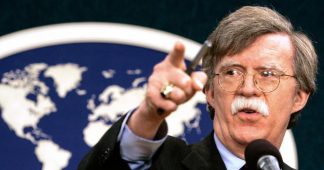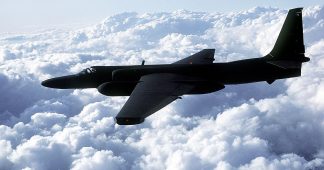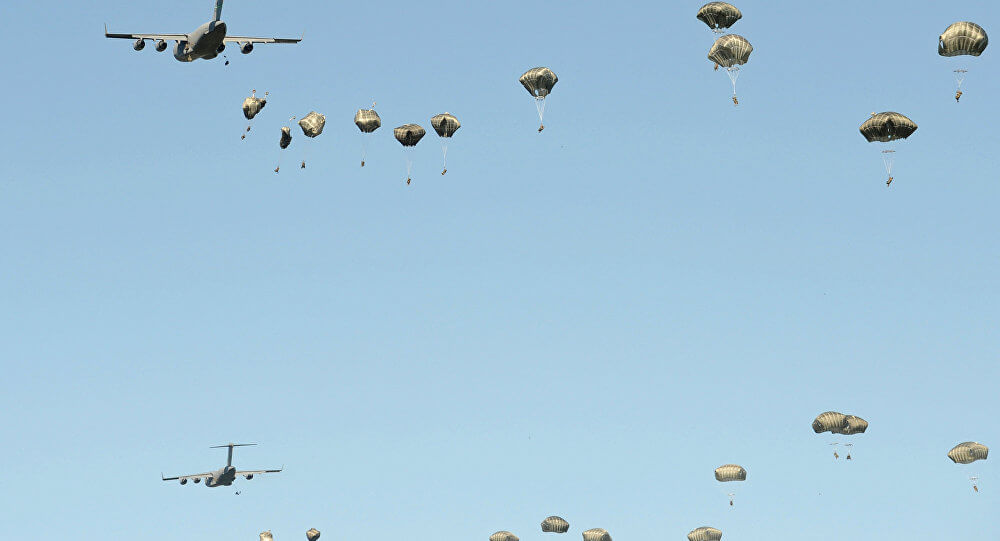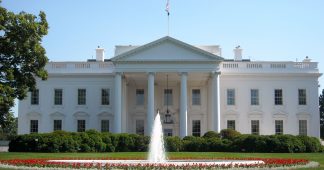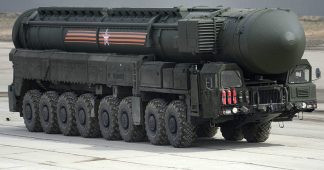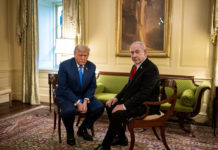by Nate Jones
Nov 5, 2018
Washington, D.C., November 5, 2018 – Beginning in 1981, the KGB’s “main objective” became “not to miss the military preparations of the enemy, its preparations for a nuclear strike, and not to miss the real risk of the outbreak of war,” according to the text of a previously secret speech by then-KGB Chairman Yuri Andropov found in the Ukrainian KGB archives and published today by the National Security Archive.
The Andropov speech, Politburo-level warnings about the war risks from NATO exercises in the fall of 1983, and other previously secret Soviet documents and declassified U.S. sources included in today’s posting, confirm that ranking members of Soviet intelligence, military, and the Politburo, to varying degrees, were fearful of a Western first strike in 1983 under the cover of the NATO exercises Autumn Forge 83 and Able Archer 83.
Also published today is a previously confidential February 1984 Soviet General Staff Journal Voennaya mysl’ [Military Thought] article analyzing NATO military exercises including Autumn Forge 83 and Able Archer 83. The article opens with a warning from Soviet Politburo member and Minister of Defense Dmitry Ustinov just after the conclusion of Able Archer 83 in November 1983. Ustinov warned that NATO’s military exercises “are becoming increasingly difficult to distinguish from a real deployment of armed forces for aggression.” The article goes on to state that, due to the large scale and realistic nature of NATO’s military exercises in 1983, “it was difficult to catch the difference between working out training questions and actual preparation of large-scale aggression.”
Today’s posting addresses a key historiographical problem faced by researchers working on the 1983 war scare, namely the paucity of primary source evidence from the Soviet side beyond the material provided by KGB defector Oleg Gordievsky. The documents published today support Gordievsky’s descriptions of KGB efforts in Operation RYaN starting in 1981 to detect signs of a potential Western first strike, and show that concerns over war risks in the fall of 1983 reached as high as the Politburo and the General Staff.
The evidence published in this posting includes:
- Text of Andropov’s 1981 speeches to KGB officers announcing the impetus behind Operation RYaN (Raketno-Yadernoye Napadenie, “nuclear missile attack”) – the Soviet human intelligence effort to detect, with the aim of preempting, a Western first strike.
- Text of a 1983 meeting between General Secretary Andropov and West German politician Hans-Jochen Vogel, in which Andropov warned of nuclear miscalculation, stating “After all, at the button that activates the nuclear weapon could be a drunken American sergeant or a drug addict.”
- U.S. State Department deliberations confirming that a U.S. Navy aircraft “probably did pass over” Soviet-claimed territory in the Kuril Island chain while conducting simulated bombing runs in April and May 1983. After the State Department rejected the démarche, the Soviet chargé d’affaires warned the United States “would bear responsibilities for the consequences.”
- Ukrainian KGB summaries of public sentiment, including after the KAL 007 aircraft shootdown on September 1, 1983, confirming Western intelligence reports of a “fear of war [that] seemed to affect the elite as well as the man on the street.”
- An October 1983 letter to all Soviet first secretaries in all regions and territories and the heads of all military districts and departments instructing them to increase border protection and internal preventative activities.
- Minister of Defense Ustinov’s November 19, 1983 announcement in Pravda publicly acknowledging the Soviets’ inability to tell a NATO exercise from an actual attack.
- A February 1984 Voennaya mysl’ [Military Thought] analysis of NATO’s 1983 exercises, echoing Ustinov’s warning of the difficulty of distinguishing exercise from attack.
- A previously secret September 1984 letter from KGB Chairman Viktor Chebrikov reiterating that the “most important” KGB activity was “not to miss the real threat of a nuclear strike.”
- A 1989 update to a 1984 U.S. National Intelligence Estimate entitled “Warning of War In Europe,” stating “we cannot rule out the possibility nevertheless, that during a crisis the Soviets might choose to launch a preemptive attack on NATO.”
- A previously unpublished interview with Colonel General Victor Ivanovich Yesin in which he recounts his time serving in the Soviet Strategic Rocket Forces during Able Archer 83. Although he never got close to launching his weapons, he states that his and other nuclear forces went on “combat alert” and that Chief of the General Staff of the USSR Marshal Nikolai Ogarkov and head of Strategic Rocket Forces Marshal Vladimir Tolubko were constantly monitoring the exercise.
Combined with previously published British and American intelligence depictions of an “unparalleled in scale” Soviet military reaction, including transporting nuclear weapons to delivery units, suspension of flight operations other than intelligence flights, and “round the clock” military preparedness, these Soviet sources further confirm the increased nuclear risk which was present during the 1983 War Scare and Able Archer 83.
While there is no evidence of an “imminent” Soviet launch of nuclear weapons in response to Able Archer 83, there is ample documentation that the East-West military-political confrontation and introduction of intermediate-range nuclear weapons by both superpowers into Europe decreased stability and increased the risk of war through miscalculation during the War Scare.
The 1983 War Scare, including the Soviet proclamations about fear of war, military reactions to NATO exercises, and introduction of a KGB program named “Nuclear Missile Attack,” which required intelligence agents’ to make their “main objective” reporting on Western plans for a first strike, should therefore be a topic of concern and study for nuclear, political, military, and intelligence historians.
Far from being a “non crisis” or a “war scare that wasn’t,” the 1983 US-Soviet confrontation is a profound representation of the “hair trigger” mindset toward which the nuclear arms race can push humanity. As the delegation of U.S. Senators that met Andropov in August 1983 wrote to their colleagues, “despite all its sophistication, modern military power can be used rashly and in an entirely self-defeating way.”
Read the documents at https://nsarchive.gwu.edu/briefing-book/aa83/2018-11-05/soviet-side-1983-war-scare
